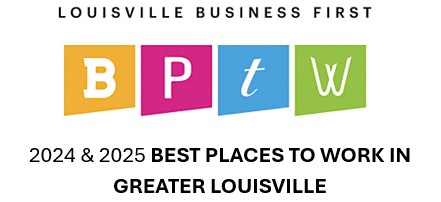February 25, 2021
By Luke Powell, WELL AP, LEED AP
You can read the full document from the Occupational Safety and Health Administration (OSHA), with all recommendations here: https://www.osha.gov/coronavirus/safework
I want to focus on the “Improving Ventilation” portion. Despite what you may hear, both the CDC and ASHRAE have recommended making improvements to ventilation to control the spread of COVID-19 in buildings.
The CDC has released important guidance around ventilation. Below are a number of strategies that include recommendations based on the ASHRAE Guidance for Building Operations During the COVID-19 Pandemic. My comments are in italic.
- Ensure ventilation systems operate properly and provide acceptable indoor air quality for the current occupancy level for each space.
- Increase ventilation rates when possible. Existing HVAC system will need to be inspected for it’s ability to handle additional load.
- When weather conditions allow, increase fresh outdoor air by opening windows and doors. Do not open windows and doors if doing so poses a safety or health risk (e.g., risk of falling, triggering asthma symptoms) to occupants in the building. Quality of OA should be evaluated and monitored for Particulate Matter if possible.
- Use fans to increase the effectiveness of open windows. To safely achieve this, fan placement is important. Avoid placing fans in a way that could potentially cause contaminated air to flow directly from one person over another. One helpful strategy is to use a window fan, placed safely and securely in a window, to exhaust room air to the outdoors. This will help draw fresh air into the room via other open windows and doors without generating strong room air currents.
- Disable demand-controlled ventilation (DCV). You can actually use your DCV system to increase ventilation when occupancy is highest, but should not be set to minimum levels.
- Reduce or eliminate recirculation, for example by opening minimum outdoor air dampers. In mild weather, this will not affect thermal comfort or humidity. However, this may be difficult to do in cold or hot weather.
- Improve central air filtration to the MERV-13 (the grade of filter recommended by ASHRAE) or the highest compatible with the filter rack, and seal edges of the filter to limit bypass. Existing fans should be evaluated to ensure they can handle the additional static pressure of higher efficiency filters.
- Check filters to ensure they are within service life and appropriately installed.
- Keep systems running longer hours, 24/7 if possible, to enhance air exchanges in the building space. At a minimum 2 hours prior to and 2 hours after occupied times.
- Ensure restroom exhaust fans are functional and operating at full capacity.
- Inspect and maintain local exhaust ventilation in areas such as kitchens and cooking areas.
- Use portable high-efficiency particulate air (HEPA) fan/filtration systems to help enhance air cleaning (especially in higher-risk areas such as a nurse’s office or areas frequently inhabited by persons with higher likelihood of COVID-19 and/or increased risk of getting COVID-19). Made sure you purchase portable air cleaners that are sized appropriately for the space they are serving.
- Generate clean-to-less-clean air movement by re-evaluating the positioning of supply and exhaust air diffusers and/or dampers (especially in higher-risk areas).
- Consider using ultraviolet germicidal irradiation (UVGI) as a supplement to help inactivate SARS-CoV-2, especially if options for increasing room ventilation are limited. Upper-room UVGI systems can be used to provide air cleaning within occupied spaces, and in-duct UVGI systems can help enhance air cleaning inside central ventilation systems. These systems must be sized and installed correctly based on exposure time and lamp intensity. Let an expert on UV systems evaluate your options.
- If ventilation cannot be increased, reduce occupancy level in the building. This increases the effective dilution ventilation per person.
While masking and hygiene are still the best strategies to combat the spread of COVID-19, improved ventilation is still overlooked by many. Please reach out to the Indoor Air Quality experts here at Air Equipment Company to help you evaluate your existing ventilation systems and see which of the above mentioned strategies are right for your building.






